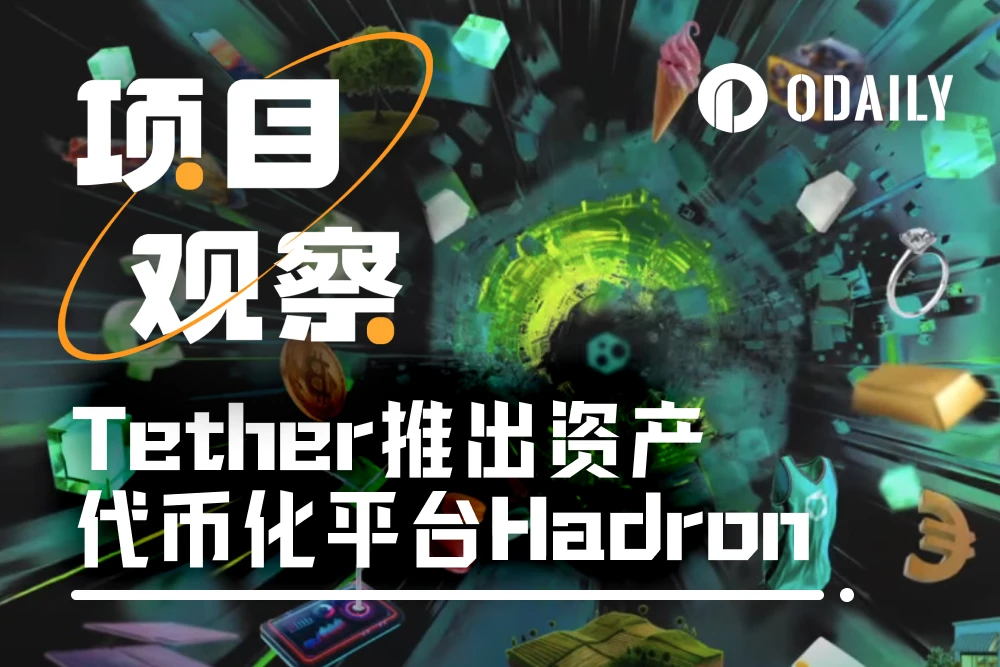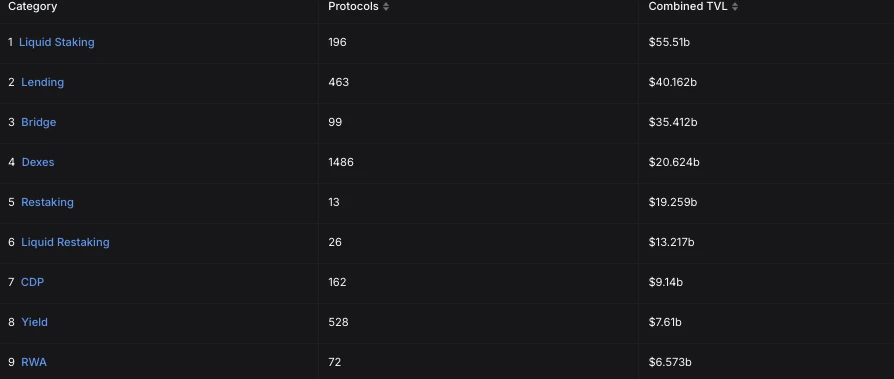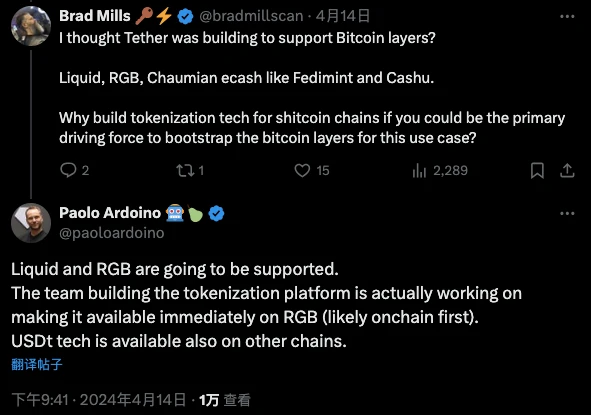Original | Odaily Planet Daily ( @OdailyChina )
Author: Golem ( @web3_golem )

On November 14, Tether, the issuer of the stablecoin USDT, announced the launch of the asset tokenization platform Hadron by Tether, which aims to simplify the process of tokenizing various real-world assets (including stocks, bonds, commodities, real estate, funds, loyalty points, etc.).
Tether claims that Hadron integrates all the technology and expertise accumulated by Tether in the past decade to provide asset tokenization services for institutions, fund managers, governments and private companies. Odaily Planet Daily will briefly introduce its product features and impacts in this article (with a small easter egg at the end of the article).
Whats special about Hadron
Hadron by Tether provides users with an intuitive platform for issuing and managing the entire life cycle of digital tokenized assets, providing modularity, security, reliability and a seamless user experience, including the following highlights:
Complete compliance framework
Because of its close relationship with traditional finance, the RWA track will face more compliance challenges than other blockchain tracks. Regulatory requirements in different countries and regions and different management methods of real assets all pose difficulties for the global circulation of asset tokenization.
Therefore, compliance is also a focus of Hadron platform. Hadron provides users with a comprehensive set of compliance tools, including KYC, anti-money laundering (AML), transaction monitoring, risk management and secondary market ecosystem monitoring. These services cover everything from on-chain to centralized exchanges. A sound compliance framework enables investors and regulators to build trust and pave the way for the circulation of tokenized assets.
Support tokenization of multiple real assets
The RWA track was also hot for a while in 2023, but the DeFi protocols at that time mostly chose to tokenize U.S. Treasury bonds or some synthetic assets, such as Sky (formerly known as Maker) and Synthetix, while other types of assets rarely had any top-tier blood to try to tokenize, because the on-chain DeFi returns became low and on-chain U.S. Treasury bonds became popular, which caused the RWA category to develop unevenly, resulting in less benefit to real companies.
The asset tokenization platform Hadron launched by Tether not only supports the tokenization of ordinary assets, such as stablecoins, stocks, bonds and funds pegged to fiat currencies or backed by commodities, but also supports the tokenization of more complex assets, such as structured products (with a basket as collateral), real estate, art, loyalty points, etc. With the strong strength of Tether, this is expected to balance the development of the RWA track and seek opportunities for alternative financing and traditional capital markets for some nation-states and enterprises.
Seamless asset tokenization experience with non-custodial assets
The Hadron platform also started testing on November 14. Users only need 4 steps to tokenize assets on the Hadron platform, as follows:
Registration: Creating your issuer account on Hadron requires users to first register and complete the KYC process;
Tokenize your assets: Connect to a non-custodial wallet, select the blockchain and KYC template for issuing tokenized assets, and set access rights, controls, and blockchain key management to create your first tokenized asset.
Distribution: Once created, users can invite potential customers to apply and obtain tokenized assets. With Hadron’s KYC platform, users can use tools to conduct compliance due diligence on customers;
Issuance or Redemption: Hadron provides secure, easy-to-use and comprehensive tools to coordinate issuance, redemption, transfer and other operations on the blockchain of choice, without requiring users to have blockchain expertise.
In addition to providing a seamless and convenient asset tokenization experience, Hadron also enables full self-custody for users (users always have full control and corresponding responsibility for their assets). It uses a very intuitive user interface to set up and configure multi-signature wallets, including hardware wallets.
Previously, many RWA projects tended to adopt centralized management and operation methods, whether in terms of real asset review, asset custody, user KYC verification, etc. Although this can make the operation of RWA smoother and easier to meet regulatory requirements, excessive centralization will always pose a greater risk. Hadron gives users sufficient rights and freedom in KYC, modularization, and asset custody, and better balances the issuers user experience and decentralization.
Can Hadron enable RWA to prosper?
On April 14 this year, Tether CEO Paolo Ardoino announced on the X platform that Tethers asset tokenization platform will be open soon (just 7 months), and has stated the keywords of the platform: completely non-custodial, multi-chain, multi-asset type, customizable. The birth of Hadron may really integrate all the technology and expertise accumulated by Tether in the past decade, and will also usher in Tethers next decade.
Paolo Ardoino said at the launch of Hadron: “We believe Hadron by Tether will significantly improve the financial industry. By leveraging all of Tether’s technology, which has already issued $125 billion in USDT, we will make asset tokenization simpler, more secure, and more scalable. Our goal is to create new opportunities for businesses and governments while making the digital asset space more accessible and transparent.”
Gabor Gurbacs, a former VanEck consultant, wrote on the X platform: By 2030, the value of tokenized assets is expected to reach approximately $10.9 trillion, of which real estate, debt and investment funds will be the top three tokenized assets, and private equity, entertainment, collectibles and data are other areas worth paying attention to. At the same time, Bitcoin capital markets, stablecoins and asset tokenization have the potential to lead the post-ETF world, bringing $10 trillion in inflow potential to new tools and changing the way a new generation of investors invest.
Alexandre Lores, an analyst at Quantum Economics, also commented : “Tether’s Hadron will change the entire digital asset ecosystem - from Bitcoin to the tokenization of real-world assets. The era of large-scale RWA tokenization has arrived, which means a fairer and more just global economic competition environment.”
According to DefiLlama data, the current TVL of the RWA track is US$6.573 billion, which is more than 8 times the TVL of the LSD track of US$55.51 billion. If the RWA track is indeed worth trillions of dollars, there is still a lot of room for growth in terms of TVL.

Tether currently occupies a very important position in terms of strategic position and capital volume in both the blockchain and traditional financial fields. The Q3 financial report released by Tether shows that its group net profit in the third quarter of 2024 is US$2.5 billion, the annual profit is US$7.7 billion, and the circulation of stablecoins exceeds US$120 billion; in terms of reserves, Tether ranks among the top 18 holders of US Treasury bonds in the world, holding more than US$105 billion in cash and cash equivalents, of which direct and indirect exposure to US Treasury bonds is as high as US$102.5 billion.
If Tether serves as a bridge between traditional finance and the crypto world, it will have more say in this regard and truly drive RWA towards prosperity.
An Easter egg
Although Hadron launched by Tether promotes the tokenization of assets in the RWA track, it also includes support for the Bitcoin ecosystem. Bitcoin L2 is included in Hadrons modular multi-chain options. At the same time, Paolo Ardoino posted a special post on November 15th saying : Among the many blockchain support options, Hadron has passed the integration of Bitcoin sidechain Liquid because we have received positive feedback from current test users (governments and institutions) about Liquid, especially its support for encrypted transactions.
Although Bitcoin sidechain Liquid may not be closely related to the current Bitcoin ecosystem. But on April 14, when facing a users question about why Tether does not support the Bitcoin ecosystem but builds tokenization technology for the junk chain, Paolo Ardoino replied : Liquid and RGB will be supported soon, and the team building the tokenization platform is actually working on making it available on RGB as well.











